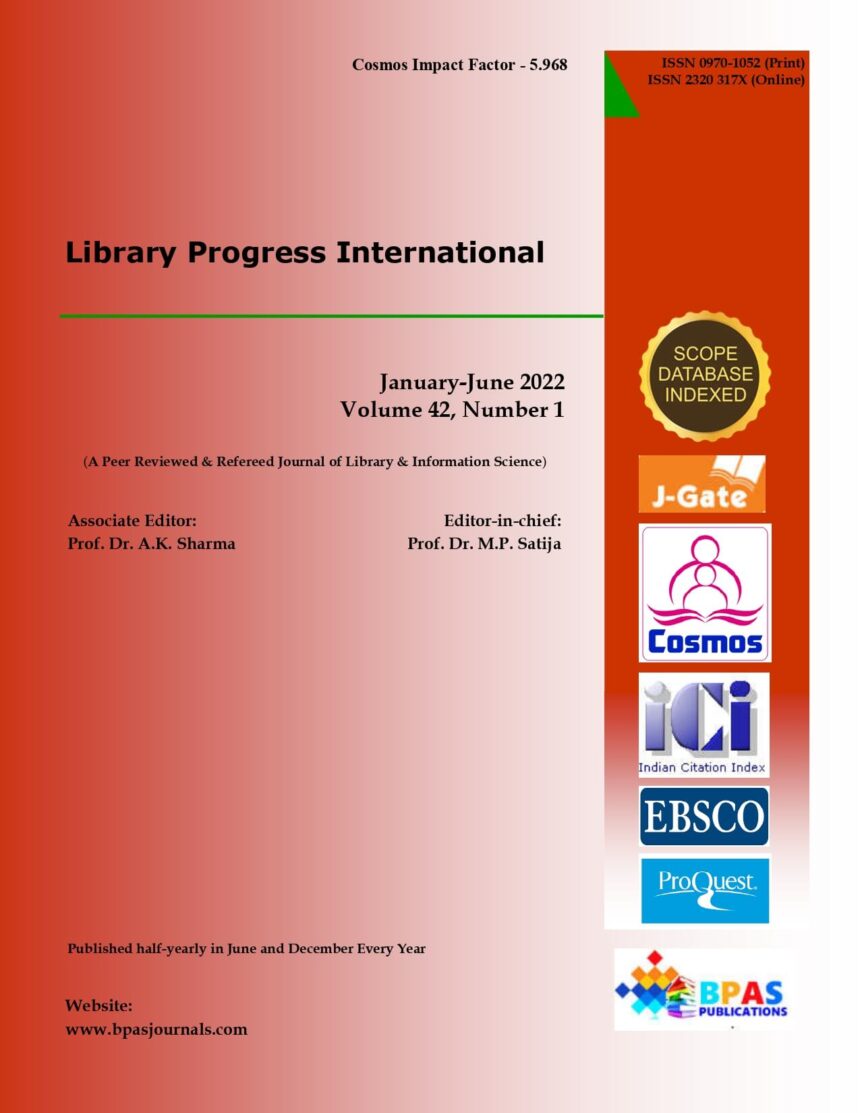Planning and Advertisement Procedure Used For Recruitment of Librarians in Federal Universities Libraries in South-South, Nigeria
DOI:
https://doi.org/10.48165/Keywords:
Planning, Advertisement, Recruitment, LibrariansAbstract
The study investigated planning and advertisement procedures used for recruitment of librarians in federal university libraries in South-South, Nigeria. The study adopted the descriptive survey design. Three (3) research questions guided the study. The population of the study comprised 108 academic librarians in the six Federal universities spread across the six states of South-South, Nigeria. The entire 108 questionnaires were administered to the respondents, only 95 were filled and returned, and was used for the study because the entire population size was manageable. The overall reliability of the instrument yielded 0.95 with the use of Cronbach Alpha Coefficient. The rating scale of 4 points was subjected to an estimation procedure using SPSS version 17.0. A mean score of 2.5 and above on any item was accepted. The major findings of the study were that the degree of agreement of librarians on all planning process was high.; that the extent in which respondents agreed on those advertisement procedures were moderately high, and the challenges associated with recruitment of librarians in the federal university libraries in South-South, Nigeria was high. Based on the findings, it was recommended as follows: that the university library management should ensure that there is the need to plan before the commencement of recruitment exercise; that the best advertisement procedures should be used to reach out to suitable applicants; and that factors such as nepotism, godfatherism, favoritism, and other challenges should not be considered in the recruitment of librarians.
Downloads
References
Armstrong, M. (2016). A handbook of human resource management practice, 10th Edition, Texas: Kogan Page, Ltd.
Brian, F. (2004). Playing Favorites: Government Executive Magazine. Retrieved from
http://www.govexec.com/magazine advice-and-dissent/management-matters advice-and-dissent/2004/10/playing favorites/17802/
Chapman, D.S., & Webster, J. (2003).The use of technologies in the recruiting, screening, and selection processes for job candidates. International Journal of Selection and Assessment, 11:113–20
De Cenzo, D., & Robbins, S. P. (2013). Personal/Human Resource Management, Prentice-Hall, New Jersey
Dessler, G. (2010). Human Resource Management, 11th Ed. New Jersey: Pearson Education.
Di Gangi, P. M., & Wasko, M. (2016). Social media engagement theory: Journal of Organizational and End User Computing, 28(2), 53–73. doi:10.4018/joeuc.20160401
Dictionary of Library and Information Science. (2011). A.P.H. Publishing Corporation,4435-36/7, Ansari Road, Darya Ganj New Delhi-110-002
Fajana, S., Owoyemi, O., Elegbede T. &Gbajumo-Sheriff, M. (2011). Human resource management practice in Nigeria.Journal of Management and Strategy 2(2), 57-62.
Firoiu, D. (2003). Personnel and Human Resource Management, Fifth Edition. Indian: Prentice Hall
Gberevbie, D.E. (2010). Strategies for employee recruitment, retention, and performance: Dimension of the Federal civil service of Nigeria. African Journal ofBusiness Management, 4(8): 12-21.
Inyang, J.B. (2011). Creating value through people: Best human resource practices in Nigeria, International Business and Management, 2 (1):141-150.
Lawrence, G.A.(2006). Challenges in recruitment of professionals for provincial service delivery. Pretoria:VanSchaik.
Mathis, R.L., & Jackson, J.H. (2004). Human Resource Management, 10th Edition. Ohio: South-Western College Publishing
McIntyre, S. (2015). Employee recruitment methods. Retrieved from: http://human resourcesmanagement.suite101.com/articl e.cfm/employee-recruitment-methods
McOliver, F. O.(2005). Management in Nigeria: Philosophy and practice. International Journal of Communication and Humanistic Studies, 2(1): 17-31.
Medved, J.P. (2014). Top 15 recruiting stats for 2014. Retrieved for blog.capterra.com 17. Milkovich, G.T.S. (2003). Human Resource
Management, Sixth Edition Boston: Irwin Press
Price, A. (2004). Human Resource Management in a Business Context. London, Thomson Learning
Ragsdale, M.A., & Mueller, J. (2005). Plan, do, study, act model to improve an orientation programme. Journal of Nursing Care Quality, 20:268 – 272.
Rothwell, W. (2010). Effective succession planning: ensuring leadership continuity and building talent from within. 5th ed., New York: Library of Congress.
Samson, W. (2013). Recruitment of staff. International journal of selection, 14(6): 21-34. 22. Whiddett, S., & Kandola, B. (2000). The effect of advertisement in public schools. People Management, pp 30-8.

